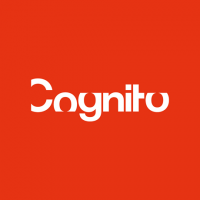It’s safe to say that digital channels have become the prime avenue for advertisers interested in targeted and measurable ways of reaching potential new customers. In fact, according to a report from Forrester Research, spending on digital advertising will overtake that of television in 2016. The research firm predicts that by 2019, digital advertising will reach $103 billion, or 36% of all ad spending.
As digital increasingly becomes the destination of choice for advertisers, several burgeoning trends and concerns have come to the forefront that we’ll be paying close attention to in 2015. Cognito solicited opinions from several ad sales folks at major publishers to get a sense of the current state of digital advertising.
Chief among the most-watched trends is undoubtedly the issue of viewability. There remains a debate between key players inside the industry as to what constitutes a digital ad impression. The Media Rating Council has declared that half of a digital ad should be in view for at least one second to be considered viewable. The Interactive Advertising Bureau has stated that 2015 should be considered “a year of transition” and advertisers should be content with 70% viewability for digital ads. Meanwhile, Unilever and its marketing agency GroupM in November said they would only buy ads that were 100 percent viewable in a browser.
It seems other agencies are of the same opinion, according to a recent AdAge article. According to AdAge, several recent RFPs it obtained from agencies all required 100% viewability from publishers.
While some publishers are pushing back, saying demands of 100% viewability are unrealistic, others say they don’t mind holding themselves to higher standards. One person who works in digital ad sales at a major, international publisher said they are “all for it” when it comes to increased viewability and that they want to be held to such lofty standards because ultimately viewability “is the currency we do business on.”
Another person we polled from a large finance-related website added that their organization is partnering with viewability vendors to help inform site and platform tech development, and better monitor campaigns.
We are also seeing an increased trend in automation. One of our sources noted that more advertisers are automating buying, using greater depth in data, and tracking back-end engagement and acquisitions using more complex technology and fractional attribution models. There's also a movement to expand beyond the banner with content distribution, which is also moving toward automation.
While new channels such as video and social are generating increased ad interest, traditional display ads are not going away, according to those we polled. Instead, there is more of a demand from advertisers for creative, dynamic display ads rather than the traditional banner ad.
These include things like personalized, real-time ads as well as those specifically optimized for mobile devices in numerous sizes and formats.
Video ads are also set to continue to grow in 2015 and beyond. According to a Business Insider report, online video ads are one of the fastest-growing ad mediums, with revenue expected to reach nearly $5 billion in 2016, up from $2.8 billion in 2013.
Our panel heartily agreed, with one person saying interest in video ads “is what we’re hearing about more than anything.” This is especially true for publishers that also operate a broadcast arm, as that footage can be repurposed into online video packages, thus creating more opportunities to sell advertising.
At Cognito, we’ll certainly be monitoring these and other trends in digital advertising and offering our thoughts throughout the year. And please use the comments section below to let us know what your thoughts are on the current and future state of digital advertising.

